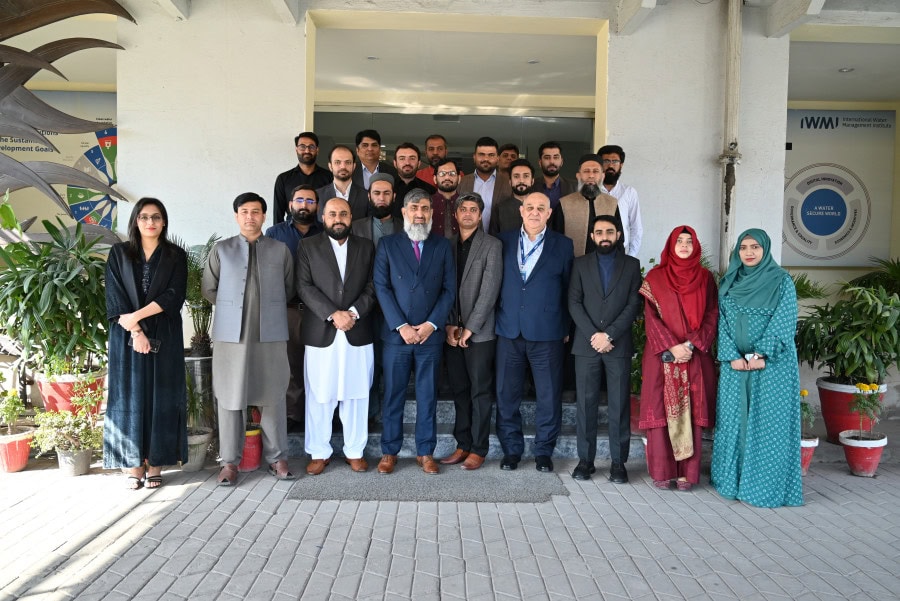LAHORE—The International Water Management Institute (IWMI) organized a three-day workshop on the PyWR Water Allocation Model in Lahore as part of the CGIAR NEXUS Gains Initiative.
The workshop focused on the challenges of managing water, energy, and food resources in the Indus River Basin. It was attended by professionals from federal and provincial governments, as well as academics from leading universities.
The PyWR model, developed in collaboration with the University of Manchester, is an advanced tool built using Python programming. This model simulates and optimizes water distribution across complex systems, enabling decision-makers to evaluate various scenarios while addressing competing demands from agriculture, energy, and domestic use. It fosters trust and reduces inter-provincial disputes by providing a transparent and auditable decision-making framework. For the Indus River Basin, the PyWR model promotes collaboration among provinces and aligns water-sharing practices with agreements such as the 1991 Water Apportionment Accord.
Dr. Mohsin Hafeez, IWMI’s Director of Water, Food, and Ecosystems and Indus Basin Coordinator of Nexus Gains, emphasized the importance of the water-energy-food nexus for sustainable development. He stated, “Digital tools like the PyWR model can transform resource management by optimizing water and energy allocation, promoting equity, and facilitating collaboration among provinces. These advancements are critical for achieving balanced and effective resource management.”
Mr. Muhammad Farooq, Director of the Water Resource Management Directorate at WAPDA, remarked, “This model offers a transformative solution for managing Pakistan’s extensive water infrastructure and is a critical tool for balancing the nation’s growing water and energy needs.”
During the workshop, participants explored the applications of the PyWR model and received training to simulate water and energy allocation scenarios. The discussions highlighted how the model aligns with the principles of the 1991 Water Apportionment Accord, which ensures fairness in resource sharing.
Mr. Shakeel Ahmed, Director of Regulation at the Punjab Irrigation Department, noted, “Given the department’s role in managing a vast network of irrigation systems and ensuring fair water distribution, the PyWR model can be a powerful tool for optimizing water allocation.”
Engr. Faisal Iqbal Sheikh, Assistant Executive Engineer at the Sindh Irrigation Department, stated, “This software will revolutionize our planning by enabling efficient internal water allocation across the entire canal system, from main canals to distributaries, minors, and watercourses.”
Engr. Manzoor Elahi, Executive Engineer at the Khyber Pakhtunkhwa Irrigation Department, added, “For Khyber Pakhtunkhwa, where water management must balance hydropower generation with agricultural needs, this model provides a platform to achieve both goals.”
Mr. Muhammad Azam Khan, Assistant Research Officer at IRSA, commented, “The model’s capacity to provide transparent and auditable decision-making frameworks aligns perfectly with IRSA’s goal of building trust and reducing inter-provincial tensions.”
Feedback from the workshop highlights the PyWR model’s potential to support the development of sustainable water allocation policies and infrastructure management strategies. Ms. Aliyan Syed, Executive Engineer for the Mohmand Dam Hydroelectric Project at WAPDA, remarked, “This model is a powerful tool for analyzing changes in water flow dynamics, particularly with the addition of new infrastructure to the Indus Basin Irrigation System.”
The workshop built on the success of a five-day training session held in September, where participants gained an in-depth understanding of water allocation modeling. IWMI continues to champion innovative tools like the PyWR model to address the challenges of the water-energy-food nexus. By promoting equitable and sustainable resource management, IWMI is helping ensure that critical Indus River Basin resources are effectively managed for future generations.










